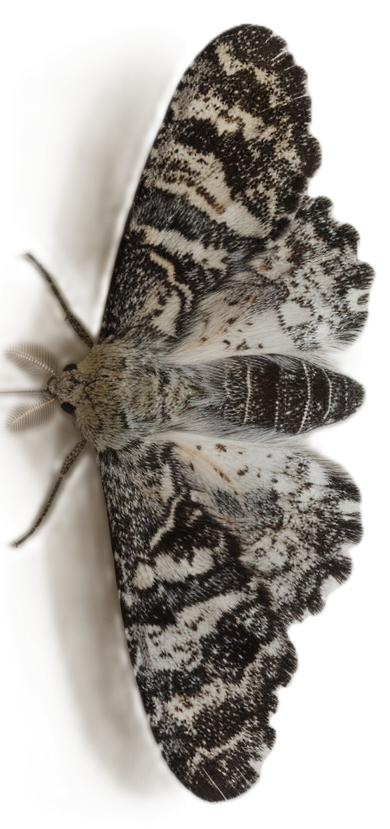Investigation: How Can Evolution be Modeled?
(Peppered Moth Simulation)

Objectives:
Describe the importance of coloration in avoiding predation.
Relate environmental change to changes in organisms.
Explain how natural selection causes populations to change.
Materials
Sheet of white paper and newspaper
Forceps
Clock with Second Hand
30 newspaper circles 30 white circles (made with hole punch)
Purpose
In this lab, you will simulate how predators locate prey in different environments. You will analyze how color affects and organism's ability to survive in certain environments.
Industrial Melanism is a term used to describe the adaptation of a population in response to pollution. One example of rapid industrial melanism occurred in populations of peppered moths in the area of Manchester, England from 1845 to 1890. Before the industrial revolution, the trunks of the trees in the forest around Manchester were light grayish-green due to the presence of lichens. Most of the peppered moths in the area were light colored with dark spots.
As the industrial revolution progressed, the treee trunks became covered with soot and turned dark. Over a period of 45 years, the dark variety of the peppered moth became more common.
Procedure.
1. Place a sheet of white paper on
the table and have one person spread 30 white circles and 30 newspaper circles
over the surface while the other person isn't looking.
2. The "predator" will then use forceps to pick up as many of the
circles as he can in 15 seconds.
3. The number that are left are doubled to represent the next generation
4. This trial will be repeated with white circles on a newspaper background,
newspaper circles on a white background, and newspaper circles on a newspaper
background. Record the data in chart below.
| Populations Start on White Background | ||||||
| Starting Population | Final Populations (how many of the original were left ) | |||||
| Generation | Newspaper | White | Newspaper | White | Double these final numbers to get your starting population for the next generation | |
| 1 | 30 | 30 | ||||
| 2 | ||||||
| 3 | ||||||
| 4 | ||||||
| 5 | ||||||
| Populations Start on Newspaper Background | ||||||
| Starting Population | Final Populations (how many of the original were left ) | |||||
| Generation | Newspaper | White | Newspaper | White | Double these final numbers to get your starting population for the next generation | |
| 1 | 30 | 30 | ||||
| 2 | ||||||
| 3 | ||||||
| 4 | ||||||
| 5 | ||||||
Analysis
1. Describe how the population of moths changed in each generation for both the newspaper and the white moths.
2. What moth coloration is the best adaptation for a dark (newspaper) background? How do you know?
3. How does the simulation model natural selection?
4. Examine the table and construct a graph. Plot the years of the study on the X-axis, and the number of moths captured on the Y axis. You should have 2 lines on your graph - one for light moths, and one for dark moths.
5. Explain in your own words what the graph shows. What type of environment do you think these moths live in?
Other Resources on Evolution
Peppered Moth Simulation - updated simulation on the peppered moth
Modeling Natural Selection - use tools such as spoons to "capture" beans and determine the best adaptations
How Did the Guppy Get His Color - guided case study exploring pools in Trinidad and guppy coloration; includes data analysis comparing pools with predators to those without
Natural Selection with Bunnies and Wolves - interactive simulation at phet.colorado.edu where students manipulate variables such as climate, fur color, presence of predator, or food limitations.
